Tibia And Femur Fixation Orthopedics Fixator Video
Tibia And Femur Fixation Orthopedics Fixator PDF
Tibia And Femur Fixation Orthopedics Fixator Specification
| Name | NO. | Picture | Unit |
| Tibial And Femur Fracture Ring Fixator | GX301001 | 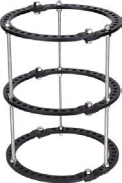 | Set |
| Lower limb lengthening external Fixator | GX301003 | 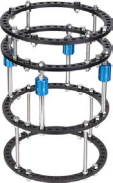 | Set |
| Tibial And Femur Fracture Ring Fixator-l | GX301004 | 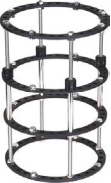 | Set |
| External Elbow Joint Fixator | GX301005 | 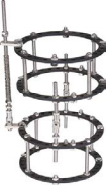 | Set |
| Tibia And Femur Fixation Orthopedics Fixator | GX301006 | 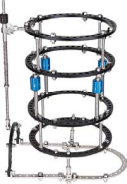 | Set |
| Taylor External Fixator | GX301007 | 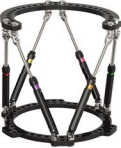 | Set |
| Knee Joint Fixator | GX301008 | 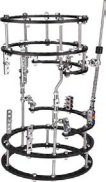 | Set |
| Ankle Joint Fixator | GX301009 | 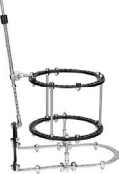 | Set |
Advantages of XC Medico's Products

CNC Preliminary Processing
The computer numerical control technology is used to precisely process orthopedic products. This process has the characteristics of high precision, high efficiency, and repeatability. It can quickly produce customized medical devices that conform to the human anatomical structure and provide patients with personalized treatment plans.
| 
Product Polishing
The purpose of orthopedic products polishing is to improve the contact between the implant and human tissue, reduce stress concentration, and improve the long-term stability of the implant. | 
Quality Inspection
The mechanical properties test of orthopedic products is designed to simulate the stress conditions of human bones, evaluate the load-bearing capacity and durability of implants in the human body, and ensure their safety and reliability. |

Product Package
Orthopedic products are packaged in a sterile room to ensure that the product is encapsulated in a clean, sterile environment to prevent microbial contamination and ensure surgical safety.
|  Product Warehouse Product Warehouse
The storage of orthopedic products requires strict in-and-out management and quality control to ensure product traceability and prevent expiration or wrong shipment. |  Sample Room Sample Room
The sample room is used to store, display and manage various orthopedic products samples for product technology exchanges and training. |
The Process To Cooperate With XC Medico
1. Ask Xc Medico Team For Tibia And Femur Fixation Orthopedics Fixator Product Catalog.
2. Choose Your Interested Tibia And Femur Fixation Orthopedics Fixator Product.
3. Ask For A Sample To Test Tibia And Femur Fixation Orthopedics Fixator.
4.Make An Order Of XC Medico's Tibia And Femur Fixation Orthopedics Fixator.
5.Become A Dealer Of XC Medico's Tibia And Femur Fixation Orthopedics Fixator.
The Advantages To Be A Dealer Or Wholesaler Of XC Medico
1.Better Purchase Prices Of Tibia And Femur Fixation Orthopedics Fixator.
2.100% The Highest Quality Tibia And Femur Fixation Orthopedics Fixator.
3. Less Ordering Efforts.
4. Price Stability For The Period Of Agreement.
5. Sufficient Tibia And Femur Fixation Orthopedics Fixator.
6. Quick And Easy Assessment Of XC Medico's Tibia And Femur Fixation Orthopedics Fixator.
7. A Globally Recognized Brand - XC Medico.
8. Fast Access Time To XC Medico Sales Team.
9. Additional Quality Test By XC Medico Team.
10. Track Your XC Medico Order From Start To Finish.
Tibia And Femur Fixation Orthopedics Fixator: A Comprehensive Guide
The Tibia and Femur Fixation Orthopedics Fixator is an innovative external fixation device designed to address complex fractures, deformities, and orthopedic conditions in the tibia and femur. This guide explores its features, benefits, clinical applications, and potential future advancements, offering an insightful resource for medical professionals and students alike.
What is Tibia And Femur Fixation Orthopedics Fixator?
The Tibia and Femur Fixation Orthopedics Fixator is an external device used to stabilize fractures, correct deformities, and manage limb length discrepancies. It employs a system of rods, clamps, and pins that secure to the bone externally, providing a robust framework for healing while avoiding extensive surgical intervention.
Designed for versatility, this fixator can treat a range of fractures, including open, comminuted, and infected fractures. It also supports distraction osteogenesis, enabling bone regeneration in cases of bone loss or limb lengthening. The fixator's external application minimizes the risk of deep infections and allows for dynamic adjustments during the recovery process.
Tibia And Femur Fixation Orthopedics Fixator Features
Modular Design
The customizable system allows for patient-specific configurations based on fracture complexity and anatomy.
High-Durability Materials
Constructed from biocompatible materials such as titanium and stainless steel to withstand stress while minimizing rejection.
Multiplanar Adjustments
Offers stabilization in multiple planes, allowing precise control over fracture alignment and correction.
Radiolucent Components
Enables seamless imaging for accurate monitoring of bone healing.
Dynamic Adjustability
Facilitates postoperative modifications to alignment, reducing the need for secondary surgeries.
Weight-Bearing Capability
Some designs allow partial or full weight-bearing to promote early mobilization and rehabilitation.
Tibia And Femur Fixation Orthopedics Fixator Advantages
Soft Tissue Preservation
External application avoids disruption to muscles, tendons, and blood vessels, promoting faster recovery.
Reduced Infection Risk
Ideal for open fractures and contaminated wounds, as the fixator does not involve internal hardware at the fracture site.
Customizable Adjustments
Surgeons can modify the fixation construct during the recovery period without additional surgery.
Supports Bone Healing
The controlled stress applied at the fracture site stimulates osteogenesis and promotes robust healing.
Facilitates Early Mobilization
Dynamic designs enable patients to begin functional movement earlier in the recovery process.
Effective in Complex Cases
Particularly useful in managing non-union fractures, deformities, and segmental bone defects.
Tibia And Femur Fixation Orthopedics Fixator Treatment of Fracture Types
Open Fractures
Provides stable fixation in cases of exposed bone, minimizing infection risks and supporting wound healing.
Comminuted Fractures
Stabilizes multiple fragments for proper alignment and healing.
Segmental Bone Loss
Enables distraction osteogenesis to regenerate missing bone tissue.
Infected Fractures
Offers effective stabilization while allowing treatment of underlying infections.
Limb Length Discrepancies
Supports controlled lengthening to address congenital or acquired differences in limb length.
Angular and Rotational Deformities
Corrects malalignment through gradual adjustments.
Risks of Tibia And Femur Fixation Orthopedics Fixator Surgery
Pin Tract Infections
A common complication requiring diligent hygiene and monitoring.
Delayed Union or Non-Union
Suboptimal alignment or patient non-compliance may impede bone healing.
Soft Tissue Irritation
Prolonged use can cause discomfort or inflammation around the pin sites.
Joint Stiffness
Immobilization can lead to reduced range of motion, necessitating physical therapy.
Mechanical Failures
Rare but possible instances of pin loosening or frame instability may require re-application.
Psychological Impact
The visible and prolonged nature of external fixation can affect patient morale and compliance.
Tibia And Femur Fixation Orthopedics Fixator Future Marke
Rising Incidence of Trauma
Increasing road accidents and high-energy injuries are boosting demand for effective orthopedic solutions.
Technological Advancements
Innovations such as computer-assisted planning and smart fixators with automated adjustments are expanding capabilities.
Aging Population
The global rise in elderly populations is driving demand for solutions to age-related fractures and degenerative conditions.
Emerging Markets
Increased healthcare investments in developing countries are fostering the adoption of advanced fixation devices.
Minimally Invasive Trends
The shift towards less invasive surgical methods is encouraging the use of external fixation systems.
Summary
The Tibia and Femur Fixation Orthopedics Fixator is a transformative device in the management of complex fractures and orthopedic conditions. Its advanced features, including multiplanar adjustability and dynamic functionality, provide unparalleled versatility and effectiveness. While there are risks associated with its use, proper surgical planning and patient education ensure successful outcomes. As technology advances and market demand grows, this fixator will remain at the forefront of innovative orthopedic care, providing hope and improved quality of life to patients worldwide.
Warm reminder: This article is for reference only and cannot replace the doctor's professional advice. If you have any questions, please consult your attending physician.
English
Русский
简体中文
繁體中文
العربية
Français
Español
Português
Deutsch
italiano
日本語
한국어
Nederlands
Tiếng Việt
ไทย
Polski
Türkçe
አማርኛ
ພາສາລາວ
ភាសាខ្មែរ
Bahasa Melayu
ဗမာစာ
தமிழ்
Filipino
Bahasa Indonesia
magyar
Română
Čeština
Монгол
қазақ
Српски
हिन्दी
فارسی
Kiswahili
Slovenčina
Slovenščina
Norsk
Svenska
українська
Ελληνικά
Suomi
Հայերեն
עברית
Latine
Dansk
اردو
Shqip
বাংলা
Hrvatski
Afrikaans
Gaeilge
Eesti keel
Māori
සිංහල
नेपाली
Oʻzbekcha
latviešu
অসমীয়া
Aymara
Azərbaycan dili
Bamanankan
Euskara
Беларуская мова
भोजपुरी
Bosanski
Български
Català
Cebuano
Corsu
ދިވެހި
डोग्रिड ने दी
Esperanto
Eʋegbe
Frysk
Galego
ქართული
guarani
ગુજરાતી
Kreyòl ayisyen
Hausa
ʻŌlelo Hawaiʻi
Hmoob
íslenska
Igbo
Ilocano
Basa Jawa
ಕನ್ನಡ
Kinyarwanda
गोंगेन हें नांव
Krio we dɛn kɔl Krio
Kurdî
Kurdî
Кыргызча
Lingala
Lietuvių
Oluganda
Lëtzebuergesch
Македонски
मैथिली
Malagasy
മലയാളം
Malti
मराठी
ꯃꯦꯇꯥꯏ (ꯃꯅꯤꯄꯨꯔꯤ) ꯴.
Mizo tawng
Chichewa
ଓଡ଼ିଆ
Afaan Oromoo
پښتو
ਪੰਜਾਬੀ
Runasimi
Gagana Samoa
संस्कृत
Gaelo Albannach
Sepeti
Sesotho
chiShona
سنڌي
Soomaali
Basa Sunda
Wikang Tagalog
Тоҷикӣ
Татарча
తెలుగు
ትግንያውያን
Xitsonga
Türkmençe
संस्कृत
ئۇيغۇرچە
Cymraeg
isiXhosa
ייִדיש
Yorùbá
isiZulu
























 Product Warehouse
Product Warehouse Sample Room
Sample Room









